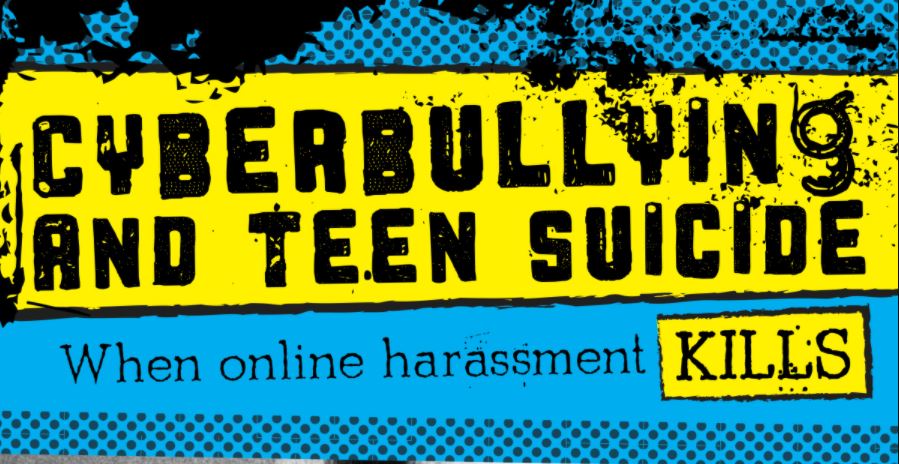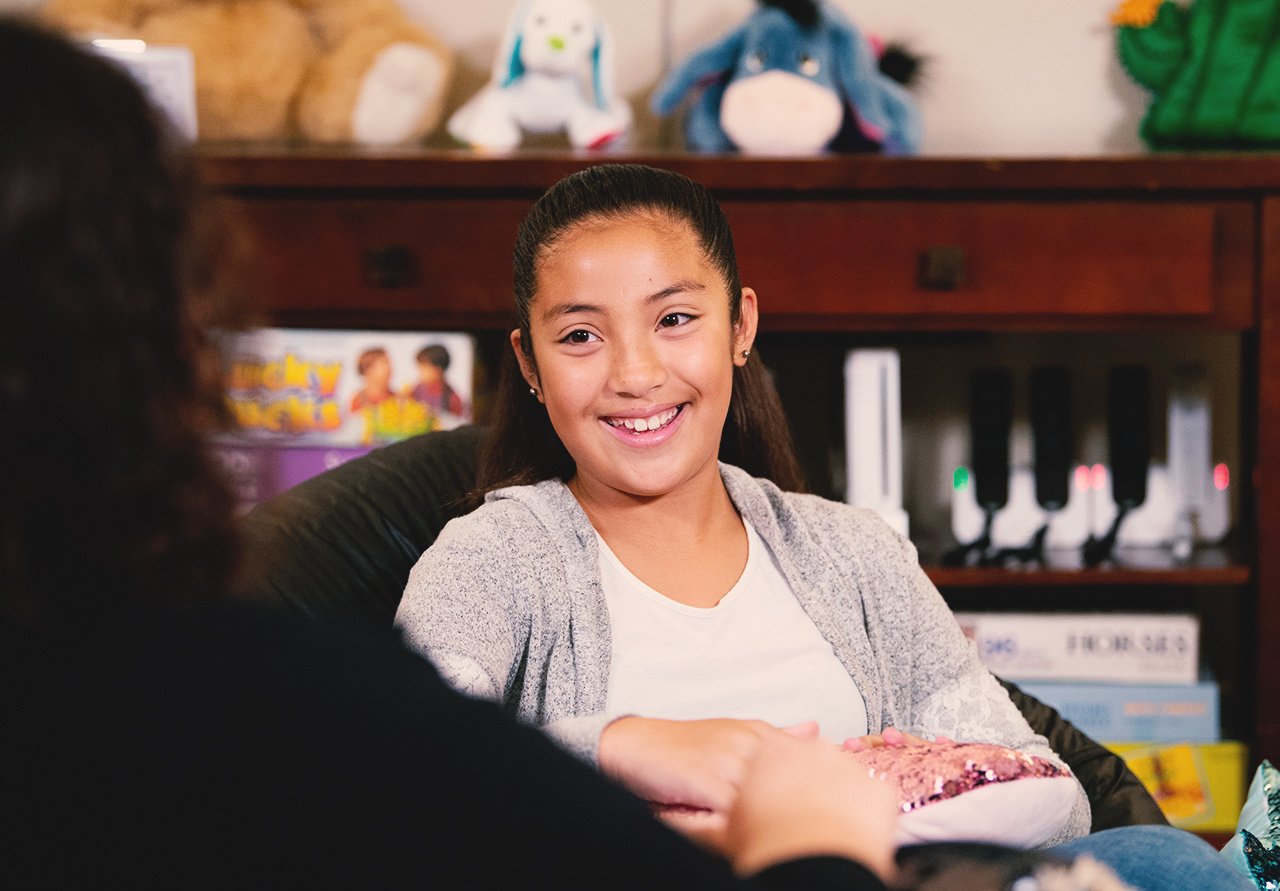
“I still don’t believe it. I still think that it’s a bigger dream. Some bad dream, and I will wake up, and she will text me.”
“We didn’t think that our son would ever do something like this.”
Two heartbreaking statements from parents who lost children to suicide, both from a once hidden and overlooked danger: online harassment and cyberbullying. The risk is immense, but parents face an uphill battle keeping their children safe from online bullies. The average teen spends 7 hours per day on electronic devices, and 52% of teens admit to being harassed online.
In short, roughly one-half of a teen’s waking hours are spent exposed to online harassment.
Bullying delivered to your phone
Cyberbullying is the use of internet or technology to cause harm (most often emotional and psychological) to another person.
You may have heard of online trolling, stalking, and impersonation. They all involve intentionally aggravating and annoying someone repetitively. Impersonation can also take the form of catfishing, making a fake profile to start a relationship. Online gaming comes with its own forms of cyberbullying. The game Minecraft popularized the acts of griefing and ganging up. Players will harass and bend game rules to frustrate other players in the hopes of making them angry or stop playing. What makes these acts unique to other types of bullying is the unlimited audience. Many of these episodes are recorded and posted on YouTube or other gaming-centered sites. Instead of just a few witnessing your embarrassment, your friends, coworkers, family, and the entire online world can see. The bullies remain anonymous and do not face the consequences a playground bully does. The victim cannot go home or run away; the harassment will always follow.
A typical bully is fueled by at least one of the following: revenge, power, lack of empathy. The first two are relatively common emotional responses for developing teens, but a bully never learned to control their actions. The latter can have far more dangerous outcomes for both victims and the bully. A lack of empathy opens the door to violence, depression, poor social skills, and the inability to develop successful relationships.
The cyberbullying victim is everyone
It’s easy, but flawed and dangerous to identify an archetype of a bullying victim. Victims aren’t only quiet, quirky students; not merely the shy and reserved. Cyberbullying shatters any preconceptions you may have. 20% of teens report being bullied online, but that figure falls short of cyberbullying’s reach. Over 52% of teens admit to enduring harassment online and nearly half of all victims never tell their parents. With so many stats showing how passive we all are about bullying, the number of unreported victims is immense. One study hypothesized that only 17% of parents know their child is cyberbullied.
The bullies themselves face “long-term negative consequences.” They grow accustomed to having the upper hand in all their relationship and lack the empathy that cultivates meaningful relationships. But the bullied children face an uphill battle overcoming the trauma inflicted upon them by bullies. They are at an increased risk of depression, low self-esteem, and poor school performance. Bullies and victims are both 10 times more likely to have suicidal thoughts at some point in their life.
Growth in teen suicide
Suicide rates in the U.S. have been climbing at a steady clip since 2000. The teen population, and in particular female teens, are one of the hardest hit demographics. Since 1999, the suicide rate for teen girls has tripled. Estimates suggest that over 7% of teens attempt suicide.
Of course, this increase is tied to a number of risk factors. There is a correlation with illegal drug use, mental health disorders, a family history of suicide, etc. But cyberbullying has risen to the top of the list of precursors to suicide. As the rate of teen female suicide climbs, we find that 66% of cyberbullying victims are female. And roughly 20% of middle school students contemplate suicide at least once, 17% of middle school students report being cyberbullied. Horrible tales of cyberbullying resulting in suicide made national headlines over the past few years.
Earlier this year, Michelle Carter got handed a 15-month prison sentence for urging her depressed boyfriend to commit suicide. She was under 18 at the time. After months of suggesting that everything would be better if he just ended his life, Michelle Carter’s final text to her boyfriend read, “Okay. You can do this.” She was on the phone with him as he died.
Tysen Benz from Marquette, MI hanged himself in his closet after he was sent text messages, on a phone his parents didn’t know he had, detailing his girlfriend’s suicide. Turns out, it was a prank. His girlfriend and her friends just wanted a good laugh. Some accounts are especially horrific, detailing the offenders complete lack of remorse.
Two girls, aged 12 and 14, taunted and harassed a 12-year-old classmate until she committed suicide. One text message instructed the victim to “drink bleach and die.” After the victim’s suicide, one of the girls posted, “Yes I know I bullied Rebecca and she killed herself, but IDAF (I don’t give a (expletive).”
Online bullies made fake dating profiles of Brandy, saying to call her for free sex, made fake Facebook profiles, and sent her malicious text messages. She shot herself as her parents tried to calm her down. Days after her funeral another fake profile popped up. Some of the comments read, “You finally did it” and “You should have done this a long time ago.”
Suicide glorified
Teens are driven to suicide by cyberbullying and other risk factors, but what makes suicide the most viable alternative? Why don’t these kids tell their parents, talk to a counselor, or just tune out the noise? For one, depression doesn’t play by the rules. Someone in pain will do whatever it takes to get rid of said pain, and for many the way out is to end their life. However, recent cultural trends seem to aggravate the matter. “Depression memes” are increasingly popular, displaying jokes about dying and being depressed. Tumblr and Reddit also have sections and blogs where depression spreads through sharing misery, not confronting it.
Netflix’s 13 Reasons Why has come under fire for creating “triggers” and failing to give “alternatives for cyberbullying.” In the show, a young woman leaves a series of recordings detailing all the people that drove her to commit suicide. There are several graphic scenes of self-harm that some feel are not treated with enough severity.
Another concern for parents and schools is the emergence of “The Blue Whale Challenge.” The depraved game asks prays on depressed and mentally unstable teens. Moderators command participants to complete a series of increasingly self-harmful tasks over the course of 50 days. The final task? Take your own life. If a participant refuses, the moderator will threaten to harm their family members. 16 teenage girls committed suicide as part of a macabre game.
It’s creator, Philipp Budeikin, calls his victims “biological waste.” He justifies his actions by claiming he is merely “cleansing society.”
An uphill battle for our youth
It’s overwhelming. Children face incredible obstacles navigating life even without bullies and criminals trying to tear them down. We might think that someone will help them out if they see the bullying take place, but studies show that 90% of cyberbullying witnesses do nothing, but watch. You can start to create a healthy online environment for your teen with an open conversation.
Explain. Encourage teens to distance themselves from negativity. Try to understand why a person would bully someone. Bullying is not just part of life.
Get help. Open communication is key to avoiding potential fatal outcomes. Talk with someone if you or your child are experiencing harassment online.
Ignore, block, unfollow. Do not give the bully the satisfaction of knocking you down or frustrating you. This is the reaction they want.
Screenshots and documentation. Collect evidence of the harassment.
Flag and report. Alert social media platforms or local law enforcement about harassment. They should be able to block and penalize bullies.
Take what little comfort you can knowing that you are educated and aware of cyberbullying. And please remember, no one is immune, not the four-sport, honor roll student, not the band kid, not even you. Cyberbullying doesn’t discriminate.











